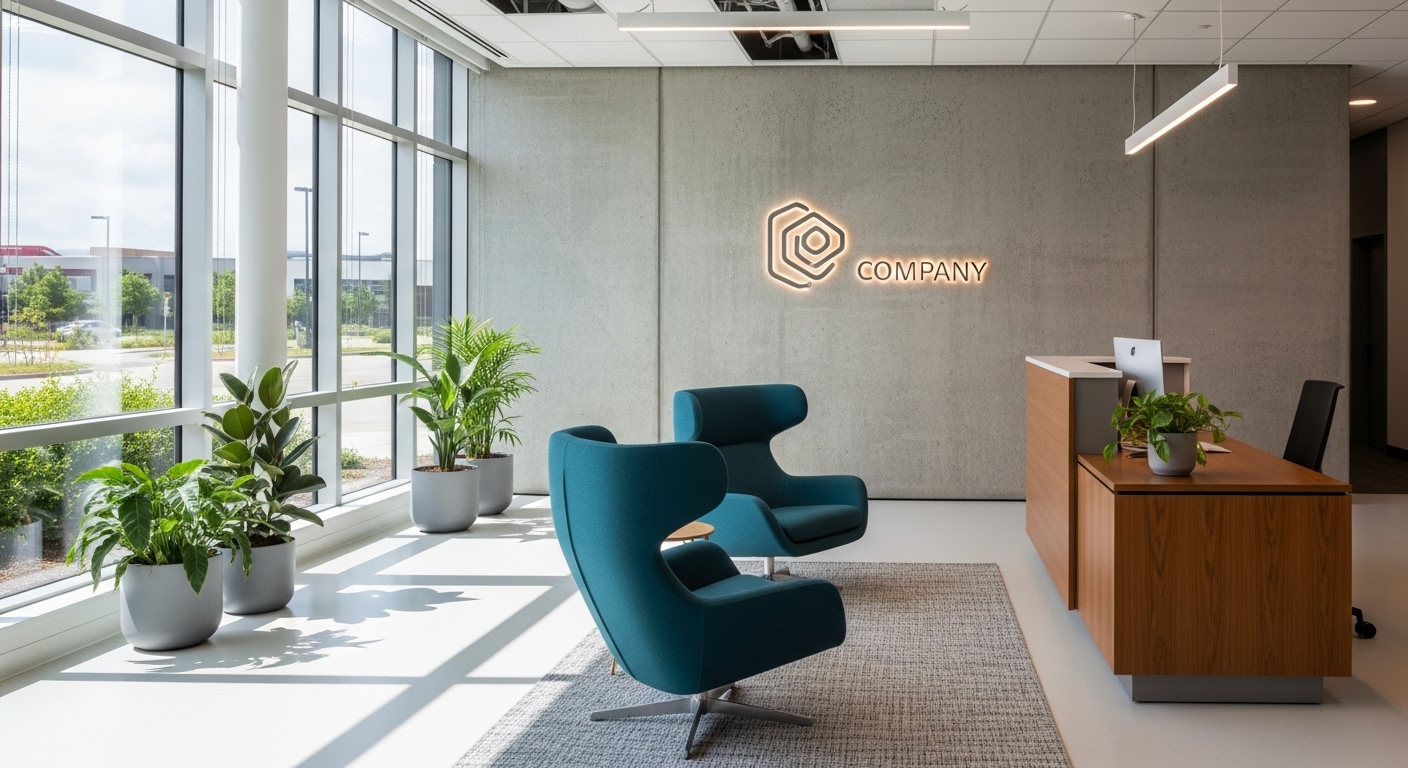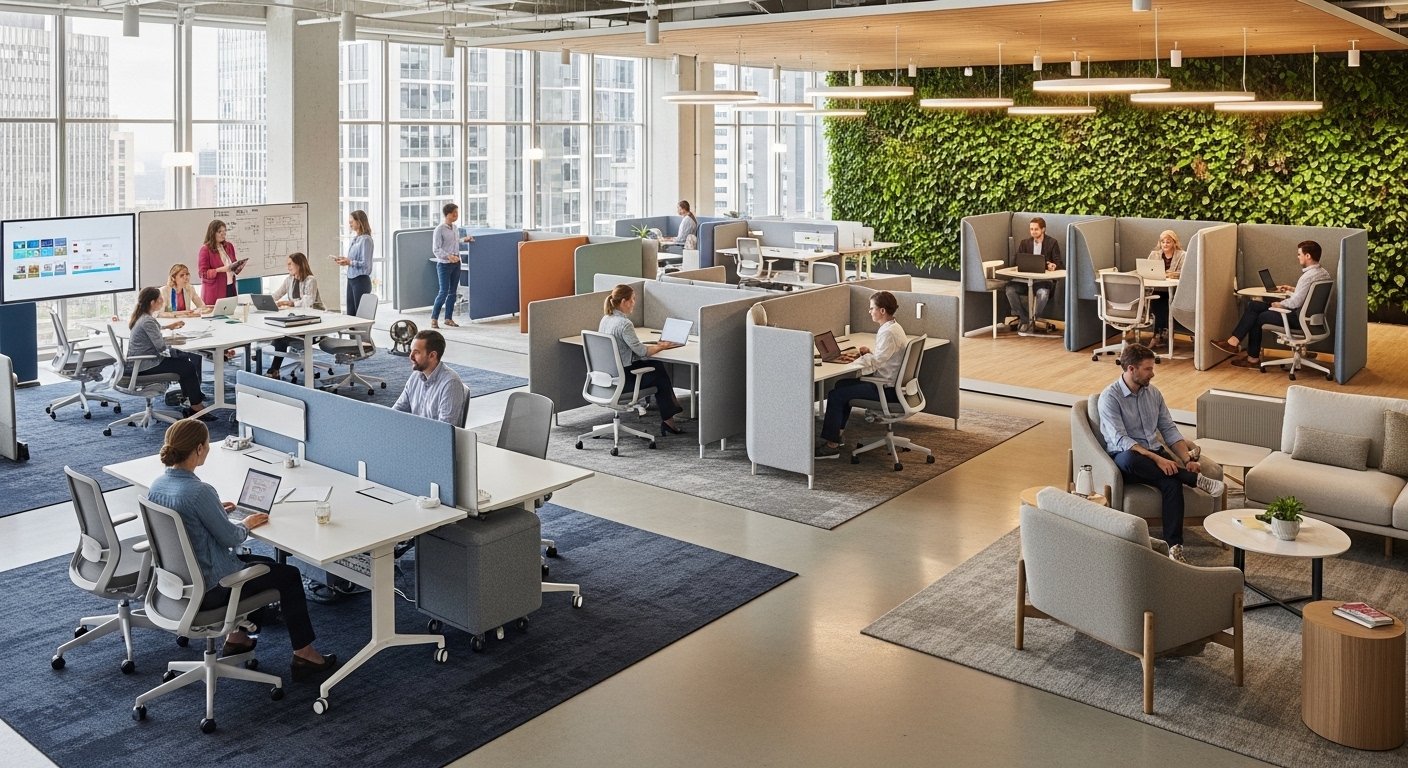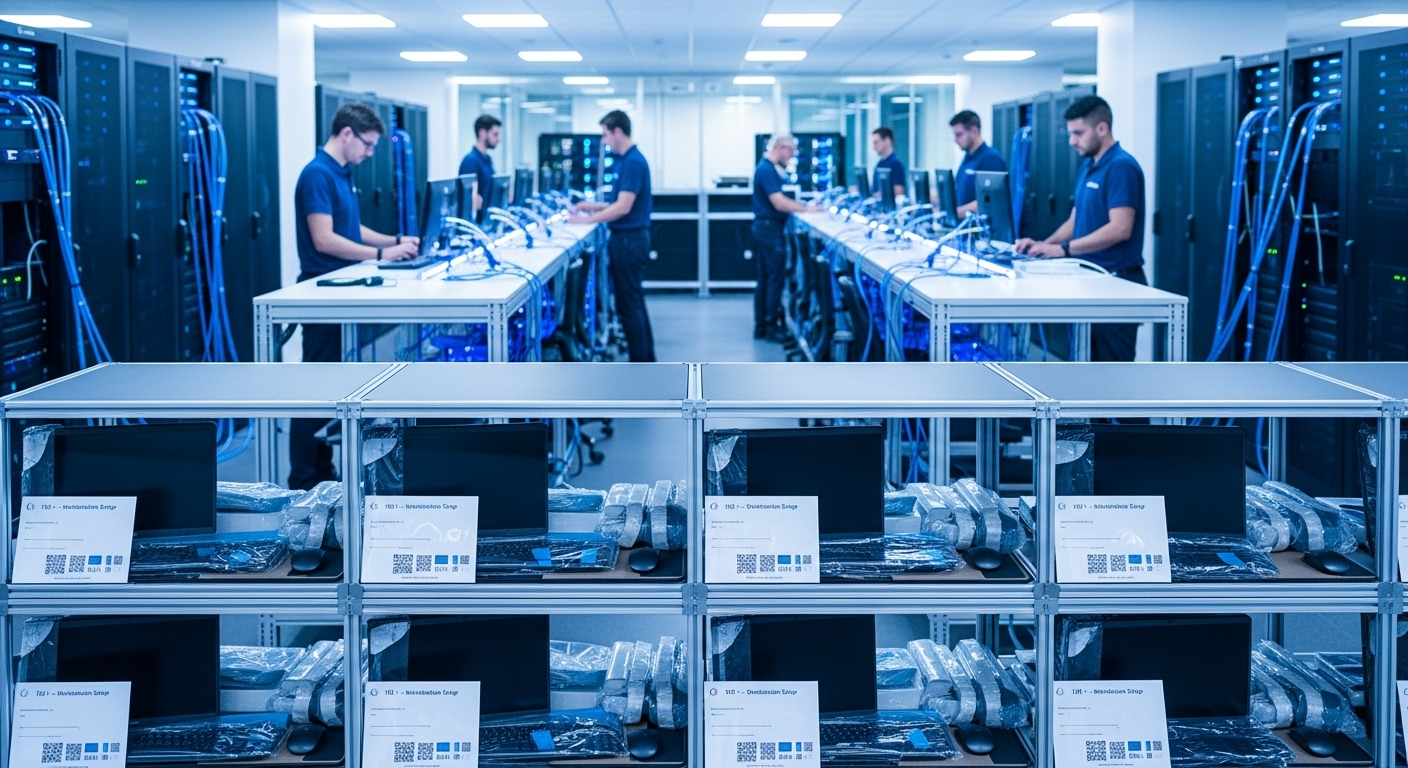Your physical workspace is more than just a collection of desks and chairs; it’s a three-dimensional billboard for your brand’s story, culture, and values. In an era where employee experience and client perception are paramount, transforming an office from a functional container into a narrative environment is a critical strategic move. This process, often called environmental branding, goes far beyond hanging a logo in the lobby. It’s about meticulously translating your company’s core identity into every color, texture, layout, and technological touchpoint. When done effectively, your space doesn’t just house your team; it actively communicates your mission, inspires your employees, and solidifies your brand in the minds of every visitor. This guide provides a comprehensive framework for this transformation, breaking down the essential stages from decoding your brand’s DNA to the final implementation. We will explore how to use sensory elements, integrate visual messaging, align your layout with your culture, and leverage technology to create a truly immersive brand experience that drives engagement and reinforces your unique identity.
The Foundation: Decoding Your Brand’s DNA for Physical Translation
Before the first paint color is selected or a single piece of furniture is ordered, the foundational step is a deep dive into your brand’s core identity. You cannot tell a story if you don’t know the plot and characters. This initial phase involves a comprehensive audit of your brand’s mission, vision, and values. Ask critical questions: What is our primary purpose? What future are we building? What principles guide our decisions and behaviors? These abstract concepts must be made tangible. For instance, a brand value of ‘transparency’ might translate into glass walls and open-plan layouts, while a value of ‘innovation’ could be expressed through cutting-edge technology and dynamic, reconfigurable furniture. The next layer is your visual identity—your logo, color palette, typography, and imagery. These are the most direct tools for branding the space, but they must be applied with intention, not just decoration. A common mistake is to simply splash the primary brand color everywhere. Instead, a sophisticated approach uses the brand palette strategically—as accent walls, in furniture upholstery, or within art and graphics—to create a cohesive but not overwhelming experience. This strategic decoding ensures that every subsequent design choice is rooted in authentic brand expression, creating a space that feels genuine and purposeful, rather than superficial.
The Sensory Palette: Using Color, Material, and Light to Evoke Emotion
Once your brand’s DNA is clearly defined, the next step is to translate it into a sensory experience. Humans are deeply influenced by their physical surroundings, and a branded space must engage more than just the eyes. Color psychology plays a vital role here. Blues can evoke feelings of trust and stability, making them suitable for client-facing financial firms, while yellows and oranges can stimulate creativity and energy, perfect for collaborative agency spaces. These colors should be drawn from your brand’s established palette but applied thoughtfully to guide mood and function within different zones. Materials are equally important in telling your brand’s story. Polished concrete and exposed steel might communicate an industrial, tech-focused ethos, whereas reclaimed wood and natural fibers can convey a commitment to sustainability and warmth. The tactile quality of these materials—the coolness of metal, the texture of a brick wall, the softness of a fabric panel—contributes to the subconscious perception of your brand. Lighting is the element that ties it all together. Bright, cool-toned lighting can enhance focus and productivity in work zones, while warmer, dimmer lighting in lounge and breakout areas can encourage relaxation and informal collaboration. Strategic use of lighting can also highlight architectural features, brand graphics, or key areas, directing attention and creating a dynamic, layered environment.
From Logos to Lore: Integrating Visual Identity and Brand Messaging
While a prominent logo in the reception area is a standard practice, truly effective environmental branding integrates visual identity and messaging in more subtle and sophisticated ways. This is about transforming your walls into storyboards that communicate your company’s history, celebrate its people, and reinforce its mission. Consider creating a ‘history wall’ or timeline graphic that visually narrates the company’s journey from its founding to the present day. This not only grounds the brand in its legacy but also instills a sense of pride and shared history among employees. Another powerful tool is the use of mission and value statements. Instead of a generic poster, these can be artfully integrated into the design—etched into glass partitions, painted as a supergraphic on a central wall, or displayed on digital screens. The key is to make them a natural part of the environment, not a corporate afterthought. Celebrating your team is another crucial aspect. Dedicated walls featuring employee photos, project successes, or milestone anniversaries can humanize the brand and foster a strong sense of community. This shows that the company values its people as much as its products or profits. This approach to visual branding moves beyond simple decoration and creates multiple touchpoints where employees and visitors can engage with the brand’s narrative on a deeper, more meaningful level.
Functional Branding: Aligning Layout and Furniture with Your Company Culture
The physical layout of your workspace is a powerful, non-verbal communicator of your company culture. The way space is divided—or not divided—and the types of furniture provided directly influence how people interact, collaborate, and work. A company that preaches a flat hierarchy and open collaboration but houses its executives in large, closed-off corner offices sends a conflicting message. Functional branding ensures that your space’s design authentically reflects and supports your operational ethos. For a culture centered on dynamic teamwork, an agile layout with a mix of open workstations, collaborative ‘huddle rooms,’ and unassigned ‘hot desks’ might be ideal. This encourages movement, cross-pollination of ideas, and flexibility. Conversely, a company that requires deep, focused work, like a law firm or software development company, should prioritize quiet zones, private pods, and acoustically treated areas. The furniture itself becomes part of the brand language. Modular, reconfigurable desks can speak to a brand’s agility. Large, communal tables in a café area can signal a commitment to community, while ergonomic, high-performance chairs show an investment in employee well-being. By mapping your core cultural values to specific layout strategies and furniture choices, you create an environment where the desired behaviors and interactions happen naturally, reinforcing your brand’s identity through daily lived experience.
The Digital Layer: Integrating Technology to Create an Interactive Brand Experience
In today’s digitally-native world, branding your space is no longer limited to physical objects. Integrating technology creates a dynamic and interactive layer that can significantly enhance the brand experience for both employees and guests. This goes beyond simply having good Wi-Fi. Digital signage is a prime example. Instead of static posters, large-format screens in high-traffic areas can display a rotating reel of content: welcome messages for clients, company news, project highlights, and even real-time data dashboards that reflect the brand’s commitment to transparency and performance. Interactive displays, such as touch-screen walls in the lobby, can allow visitors to explore the company’s history, portfolio, or values in an engaging way. Even the guest Wi-Fi network offers a branding opportunity; a custom landing page can share a brand video or key message before granting access. Smart office technology can also be a reflection of your brand. A company that prides itself on innovation can showcase this through features like app-based room booking, smart lighting that adjusts to natural daylight, or environmental sensors that optimize comfort. This digital layer demonstrates that the brand is forward-thinking and invests in creating a seamless, modern, and efficient environment for its people.
The Implementation Blueprint: From Concept to Completion and Beyond
Translating a brilliant brand strategy into a physical reality requires a meticulous and well-managed implementation process. This is the logistical phase where vision meets execution. The first step is to assemble the right team, which may include interior designers, architects, brand strategists, and project managers who understand how to build narrative-driven environments. A clear and detailed brief, developed from the initial brand decoding phase, is essential to ensure all partners are aligned. Budgeting is a critical component. It’s important to allocate funds not just for construction and furniture, but also for custom fabrications, technology integration, and specialty graphics. A phased approach can make a large project more manageable, prioritizing high-impact areas like the reception and common spaces first. Vendor selection is equally crucial. Choose fabricators and installers who have a portfolio of high-quality work and who can deliver on the specific material and technological requirements of your design. During the build-out, regular site visits and check-ins with the project manager are vital to ensure the execution stays true to the original design intent. But the process doesn’t end on move-in day. A successful branded space is a living environment. Plan for ongoing updates to digital content, opportunities to showcase new projects, and ways to evolve the space as the company grows and its story continues to unfold.
Conclusion: Your Space as a Strategic Asset
Branding your space is an investment that pays dividends far beyond aesthetics. It’s a strategic initiative that transforms your physical environment from a cost center into a powerful asset that actively works to strengthen your business. By moving beyond superficial decoration and focusing on a holistic, narrative-driven approach, you create a workspace that is a true embodiment of your brand’s identity. The journey begins with a deep, authentic understanding of your brand’s DNA—its mission, values, and story. This foundation informs every subsequent choice, from the sensory palette of colors and materials to the functional layout that shapes your company culture. Integrating visual lore and interactive digital layers turns passive walls into active storytellers, constantly reinforcing what your brand stands for. The result is a multi-faceted environment that energizes employees, fosters a cohesive culture, and leaves a lasting, positive impression on clients and partners. In a competitive market for talent and customers, a space that tells a compelling story is no longer a luxury; it is a fundamental component of a resilient and successful brand. Your office is your stage; by designing it with intention, you ensure it’s telling the right story, every single day.





